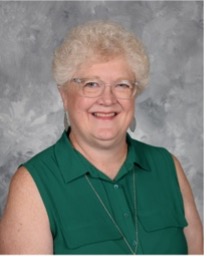In the mid-1990s I did a novel study with my advanced sixth grade reading group, and I thought I was the coolest teacher ever. I remember writing all my own materials to go with the study – vocabulary words, worksheets for various literacy skills, and quizzes. Many years later I majored in literacy in graduate school and completed a reading endorsement. By that time, I was teaching freshman English, so we had literature circles. Again, I wrote all the materials but with better background knowledge about literacy. We ended the unit with skits from the books. (Today’s students would prefer making videos!) I cannot claim to know when the idea for using novels first took off in the classroom, but book clubs (aka literature circles) began in 1989 when a team of university professors and teachers started exploring new ways to teach literacy skills (Raphael, Kehus, & Damphousse, 2001). If teachers needed to be creative to inspire readers back then, it is even more important now in the age of social media. Faith-based schools must be intentional in their choice and use of novels.
The benefits of using novels have likely already been realized at your school, so this article seeks to focus on the selection process. Curriculum directors (or principals) need a strategic plan for novel use that is as well-thought out as any other part of the curriculum; otherwise, teachers may dash off to the local library and get an entertaining young adult novel without guidance or sufficient consideration. First, a school should determine the grades in which novels will be used and the time of year. For example, while sophomores are ready for novel study at any time, fourth and fifth graders may be better equipped at the end of the year. Next, a school should identify its goals for using a novel. What standards will be covered in the novel study? What literacy skills will be taught? It is probably fair to say that most faith-based schools are seeking to incorporate more Christian and multicultural literature into their curriculum; novels can be a way to accomplish this goal. If your school has curriculum maps, they should be used to determine when and how a novel would best fit in a course.
Once you have established the grade levels and goals for novel use, you need a policy to guide administration and teachers in the selection of books. The selection should align with your school’s mission and expected student outcomes, fit your curriculum, support your standards, and add academic value. Teachers will appreciate the autonomy of being allowed to select their own novels, and a policy will help them evaluate options.
Here are the book selection guidelines our school has created:
1. The content of classroom novels should easily allow for Biblical Worldview Integration. The main characters should evidence moral standards, or the theme should mirror biblical choices and behavior, or right should triumph over evil. Plots which glorify sinful attitudes and behaviors that do not result in positive change should not be considered.
2. Classroom novels should have high literary merit. This includes plot, character development, and theme. Higher order vocabulary should be evident.
3. Classroom novels should provide material for instructing and assessing multiple state standards and should be fully developed as a unit within Curriculum Trak.
4. Classroom novels should not only be age-appropriate but also fit the average reading level of the class while considering the Zone of Proximal Development.
5. Classroom novels that include crude language, extreme or frequent cursing, or that use cursing which is not necessary for character or plot development, should not be considered.
6. Classroom novels should not portray premarital sex, any graphic descriptions of sexual acts, or graphic violence.
7. When possible, classroom novels should have a multicultural aspect – main characters who are non-White, a non-White author, or a theme that focuses on a cultural issue. The literature used in our classrooms should reflect the demographics of our student population.
8. Grades 3-6 should not read more than one novel per year, and grades 7-11 should read no more than two.
9. Novels should be selected with the intention that they will be used for at least four years to provide continuity to our curriculum.
Vetting the book is a necessity: it must be read in its entirety by the teacher and one other person (likely the curriculum director or principal). It is helpful to consult a conservative media review website as well. Once the book is read, the teacher should submit a request in writing to his/her principal or curriculum director to add the novel to the curriculum. The request should include rationale for the book’s usage, estimated length for the novel study, and alignment to the school’s standards. Finally, the school should ensure that it can obtain enough copies of the book for the entire class. Our public library offers book kits for teachers. Some teachers have found bulk copies of books for sale online. When these options do not work, the teacher may have to wait until the book can be included in the next year’s textbook budget.
How to effectively use a novel in the classroom is an issue for future discussion and has its own list of necessary requirements. Winter is approaching, and what is better than curling up with a good book on a chilly evening? Unfortunately, every school faces the challenge of inspiring students to read rather than watch streaming programs on TV or YouTube videos. Classroom novels can be a great way to get students into books; they provide a change of pace in the classroom and offer many avenues for learning. A well-chosen novel has the potential to impact students for years to come, raising their literacy level and motivating them to pick up another book on their own.




